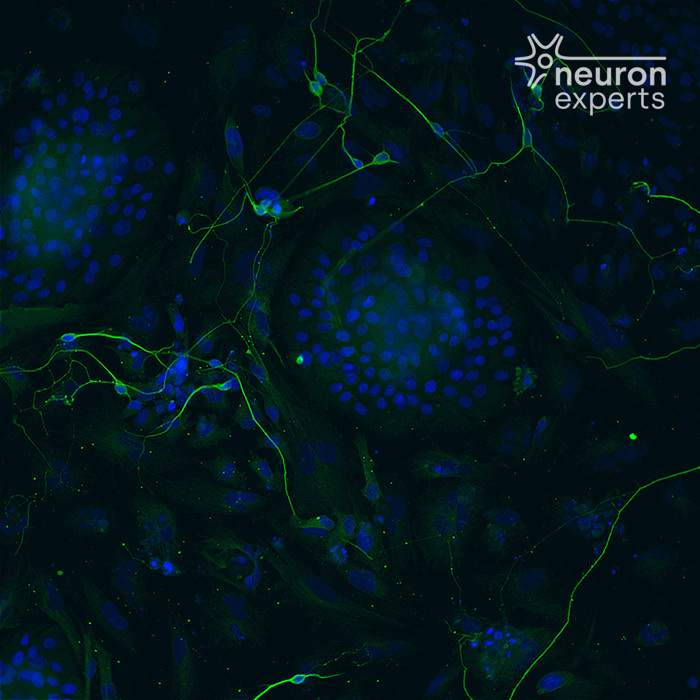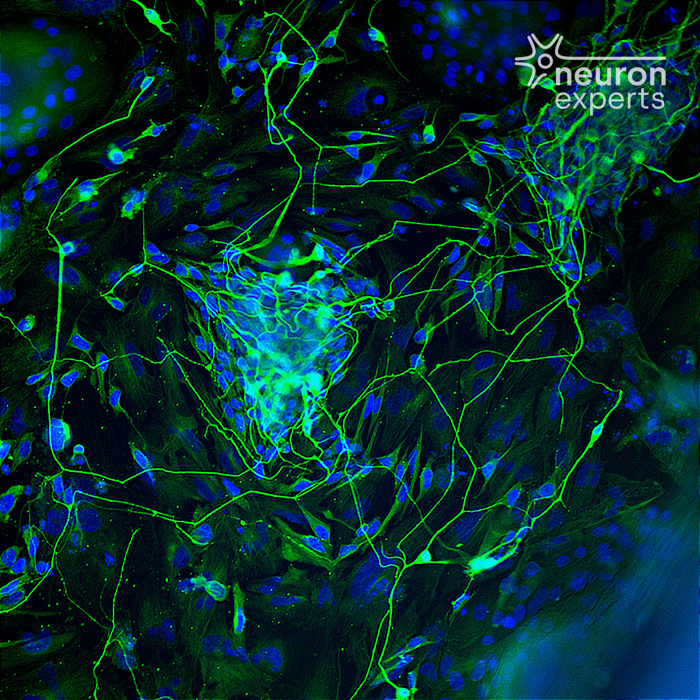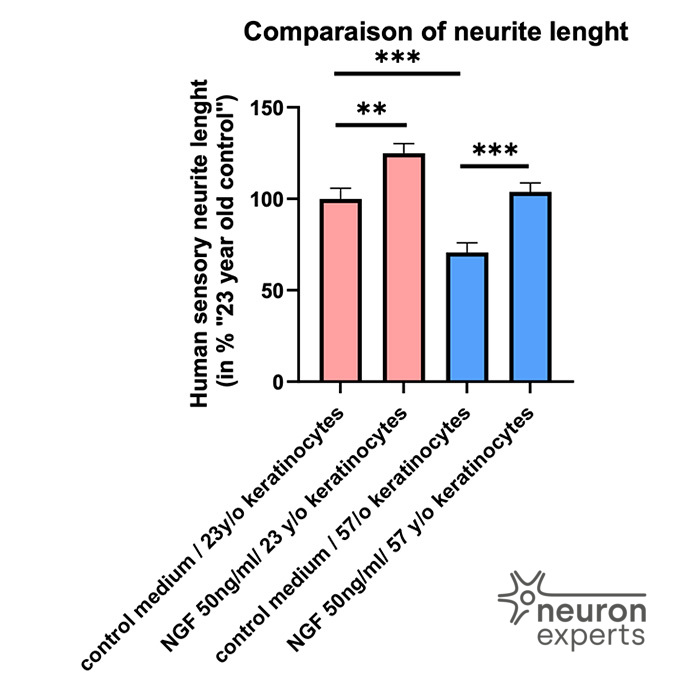Among the numerous deleterious effects observed in skin with ageing, skin becomes thinner and the density of innervation decreases. This loss of innervation induces difficulties to properly detect any changes in the skin physiology and on its environment. By reactivating sensory neurons and restoring skin innervation it is possible to counteract ageing deleterious effects.
Whether due to a natural process or accelerated by external factors such as UV exposure or pollution, the skin, like any other organ in the human body, undergoes an aging process closely linked to the loss of integrity of tissues and certain functionalities. Knowing the crucial role of neurons in maintaining skin integrity and their ability to detect stimuli it is therefore obvious that anti-ageing strategies should include neurons and skin innervation. Sensory neurons have the particularity of being able to regenerate their nerve endings. It is thus possible by treatment with an ingredient to activate the growth of neurites or to increase the capacity of keratinocytes to release molecules having this capacity.
By reactivating sensory neurons and restoring cutaneous innervation, it is possible to counter the deleterious effects of aging.
Neuron Experts has developed a model of co-culture of human sensory neurons and keratinocytes allowing to mimic a loss of innervation and thus to evaluate the ability of active ingredients to reactivate the neuritic growth of sensory neurons.
Cell System
- Humans iPS derived sensory neurons + keratinocytes from different ages
Model of activation
- Growth factors induction
- UVA treatments
- Pollutant exposure
Endpoint Evaluation
- Neurite length measurement

Human sensory neurons, control medium without NGF - Green: β-tubulin; Blue: DAPI

Human sensory neurons, control medium + NGF (50ng/ml) - Green: β-tubulin; Blue: DAPI

- Growth factors dosage
- Growth factors receptors expression
